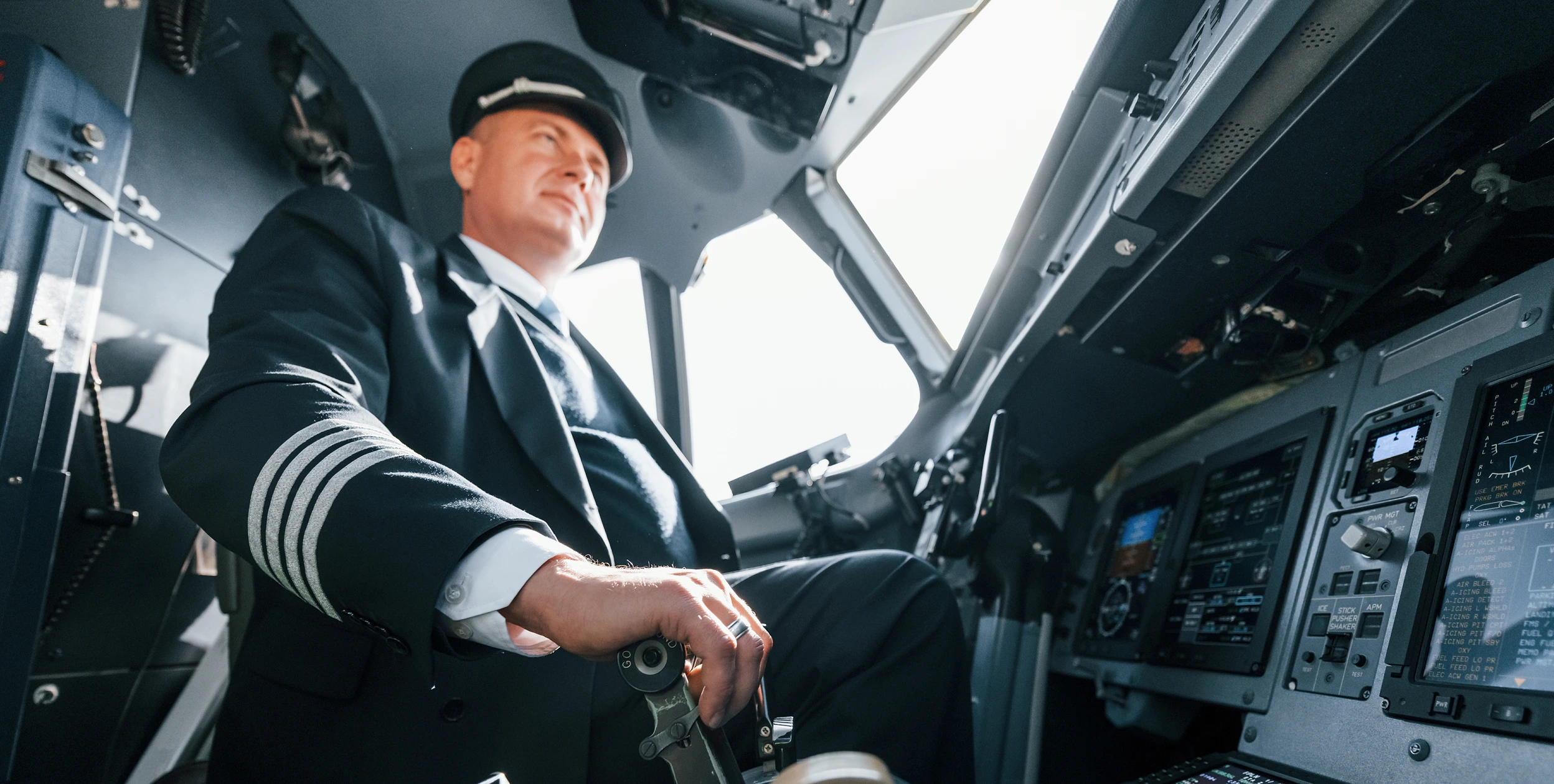ATR Type Rating training is essential for pilots, but it comes with common challenges. Below, we highlight some of these challenges and provide tips on how to avoid them for a smoother and safer transition to real-world operations.
Mistake: Many pilots start their ATR 500 or ATR 600 Type Rating training without sufficient preparation, assuming they will learn everything during the course. This assumption often leads to difficulties in understanding the aircraft’s complex systems and procedures. Without a solid foundation, trainees may struggle with operational concepts, slowing down their progress and increasing frustration during simulator sessions.
How to Avoid It:
To ensure a smooth training experience, pilots should review ATR aircraft manuals and operational handbooks before starting the course. Familiarizing themselves with the aircraft’s systems, limitations, and emergency procedures will provide a crucial knowledge base. Additionally, using flight simulation software to practice basic ATR operations can help reinforce understanding and improve confidence before formal training begins. Proper preparation allows pilots to focus on advanced concepts during the course rather than spending valuable time catching up on the basics.
Mistake:
Pilots often fail to develop a deep understanding of the ATR aircraft’s electrical, hydraulic, and fuel systems. This lack of comprehension can lead to difficulties when handling real-world scenarios, especially during abnormal or emergency situations. Without a thorough grasp of these critical systems, decision-making becomes slower and less effective, increasing the risk of operational errors.
How to Avoid It:
To build a strong technical foundation, pilots should pay extra attention during ground school sessions, actively engaging with the material rather than passively absorbing it. Asking instructors for practical demonstrations of system operations can significantly improve understanding by offering hands-on experience. Additionally, using flow charts and system diagrams helps reinforce learning by providing a visual representation of complex systems, making them easier to recall during flight operations.

Mistake:
ATR aircraft require precise manual handling skills, especially in non-autopilot flight modes. Some pilots develop a heavy reliance on automation and struggle with manual flight control when required. This can become particularly problematic during critical phases such as takeoff, approach, and landing, where precise handling is essential for safety and smooth operation.
How to Avoid It:
To improve manual handling proficiency, pilots should dedicate time to practicing manual flying skills in the simulator. Focusing on fundamental aspects like pitch, power, and trim management will also help develop better control and confidence in hand-flying the aircraft. Finally, avoiding over-reliance on the autopilot, especially during approach and landing phases, ensures that pilots maintain their ability to operate the aircraft effectively in a variety of conditions.
Mistake:
ATR operations require effective Crew Resource Management (CRM) to ensure safe and efficient flight operations. Poor communication between captains and first officers can lead to misunderstandings, delayed decision-making, and operational mistakes. Ineffective CRM can also create a stressful cockpit environment, reducing overall performance and increasing the likelihood of errors during critical flight phases.
How to Avoid It:
To strengthen CRM skills, pilots should actively participate in teamwork-based training that enhances communication and coordination. Practicing thorough briefings and cross-checks before each flight phase fosters clarity and mutual understanding between crew members. In addition, developing situational awareness allows pilots to anticipate potential errors and proactively address challenges, leading to a safer and more efficient cockpit environment.

Mistake:
Pilots often prioritize normal operations during their ATR Type Rating training and neglect emergency procedures. This imbalance can result in delayed or incorrect responses when faced with real-world emergencies, where quick and decisive actions are critical. Without proper preparation, handling situations like engine failures or hydraulic malfunctions can become overwhelming, increasing operational risks.
How to Avoid It:
To improve emergency preparedness, pilots should memorize key emergency checklists, such as those for engine failure and hydraulic system malfunctions. Also, regularly practicing simulated emergency scenarios in the simulator helps reinforce quick and accurate responses under pressure. Finally, developing strong decision-making skills in high-stress situations ensures pilots remain composed and efficient when managing unexpected challenges in real flights.
Mistake:
ATR aircraft require precise approach and landing techniques to ensure safe and smooth touchdowns. Many pilots struggle with maintaining a stabilized approach, executing proper flare techniques, and handling crosswind landings. Poor management of these phases can lead to unstable approaches, hard landings, or runway excursions, increasing safety risks.
How to Avoid It:
To improve approach and landing proficiency, pilots should adhere strictly to standard approach profiles and descent rates, ensuring a stable and controlled descent. Besides, maintaining proper airspeed and vertical speed control throughout the approach phase is crucial for achieving smooth landings. What’s more, practicing crosswind landings and short-field operations in the simulator helps pilots develop confidence and refine their handling skills in challenging conditions.

Mistake:
Some pilots either become overly dependent on automation or fail to use the Flight Management System (FMS) correctly, leading to inefficiencies in flight operations. Mismanagement of automation can result in navigational errors, delayed responses to ATC instructions, and difficulties in adapting to dynamic flight conditions. Over-reliance on autopilot may also degrade manual flying skills, making it challenging to handle the aircraft effectively when automation is unavailable.
How to Avoid It:
To optimize automation usage, pilots should develop a strong understanding of FMS programming, including proper waypoint management and route modifications. Automation should be used as a tool to enhance efficiency, but pilots must maintain manual flying proficiency to handle situations where automation is not an option. Additionally, a thorough understanding of autopilot modes and their limitations ensures pilots can effectively manage automation while remaining prepared to take manual control when necessary.
Mistake:
Every airline has its own Standard Operating Procedures (SOPs), which may differ in certain aspects from general ATR procedures. Pilots who fail to familiarize themselves with these airline-specific protocols often struggle during line training, leading to difficulties in adapting to operational expectations. This lack of awareness can result in procedural errors, inefficient workflows, and increased pressure when transitioning to real-world airline operations.
How to Avoid It:
To ensure a smooth transition, pilots should study airline-specific ATR SOPs before starting their job, familiarizing themselves with the particular procedures and protocols. Attending airline training briefings and discussions will also help pilots understand the company’s expectations and operational practices. Moreover, pilots should ask senior pilots or instructors for insights into real-world operations to better understand the nuances of the airline’s SOPs and improve their performance during line training.

In conclusion, effective ATR Type Rating training at Global Training Aviation (GTA) is designed to help pilots address and correct common mistakes that can arise during their training. GTA offers comprehensive courses focused on preparing pilots with the knowledge and skills needed to avoid errors related to system understanding, manual handling, CRM, and emergency procedures.
By offering hands-on training and practical insights into airline-specific SOPs, GTA ensures pilots are fully equipped to avoid over-reliance on automation and improve their approach and landing techniques. Our goal is to help pilots refine their abilities and perform safely and efficiently during both training and real-world operations.